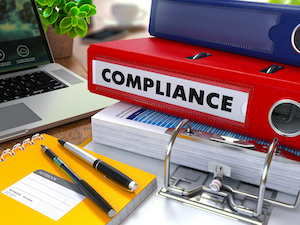Retaining and maintaining records is not a minor matter—ERISA and Department of Labor (DOL) regulations make that clear. And yet, says a plan administrator, policies concerning record retention and maintenance are not as common as one may expect.
policies concerning record retention and maintenance are not as common as one may expect.
Watkins Ross, in a recent blog entry, argues that when it comes to the amount of time one uses in saving plan records, bigger is better. They also advocate employing a written record retention statement, which is particularly important, they say, for plans whose original paper records are destroyed and that rely on electronic records.
They remind that retirement plan documents:
- are necessary for calculating a participant’s benefits;
- must be kept throughout the life of the plan; and
- must be appropriately adopted, signed and dated.
This applies to all of the following, says Watkins Ross—starting when the plan is established—including:
- retirement plan documents;
- amendments;
- interim amendments;
- restatements;
- loan policies; and
- QDRO policies.
In addition, the blog says, a plan sponsor may want to keep the following documents, since the IRS and DOL may want to see them if they audit or examine the plan:
- summary plan description (SPD);
- summary of material modifications (SMM);
- materials related to corporate actions, such as meeting minutes, agendas and handouts;
- service agreements;
- fidelity bonds; and
- fee disclosures.
HOW Long?
Some documents must be retained for a certain amount of time, while others must be kept indefinitely, the blog notes.
At Least Six Years. Under ERISA, the following retirement plan documents must be retained for at least six years after the date the Form 5500 filing is due:
- Form 5500 and related schedules;
- Forms 8955 SSA, 5330, 1096 and 1099R;
- summary annual reports (SARs);
- audited financial statements.
- annual census data;
- contribution calculations;
- retirement plan testing; and
- all participant notices, such as safe harbor, auto-enrollment, QDIAs, participant fee disclosures and black-out notices.
Longer-Term. The following documents related to participants must be retained indefinitely while the plan is functioning and at least seven years after it is terminated:
- date of hire or rehire;
- date of termination;
- eligibility date;
- compensation;
- participation election forms;
- contribution election forms;
- designated beneficiary forms;
- distributions requested
- distributions received;
- rollover requests;
- qualified domestic relations orders;
- plan loan documentation; and
- records sufficient to permit benefits due to be determined.
Plan Sponsors
Ultimately, Watkins Ross says, it is the plan sponsor’s responsibility to maintain the retirement plan’s complete records. They argue that plan sponsors should:
* have access to all relevant documents;
* maintain documents on their network with a secure backup copy; and
* remember that lawsuits are a possibility and that documents can help in a defense against a suit;
* government agencies may want to see documents; and
* make sure records and reports are saved if there is a change in third-party administrators.
- Log in to post comments
